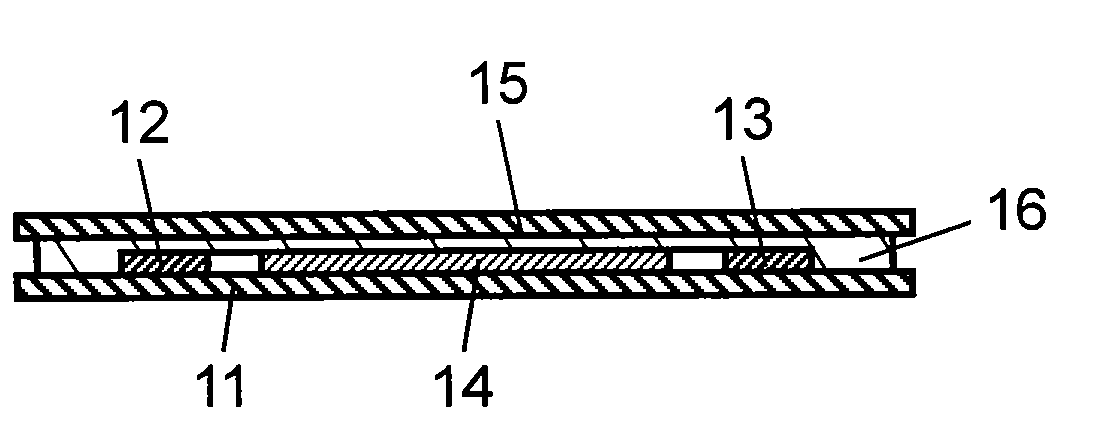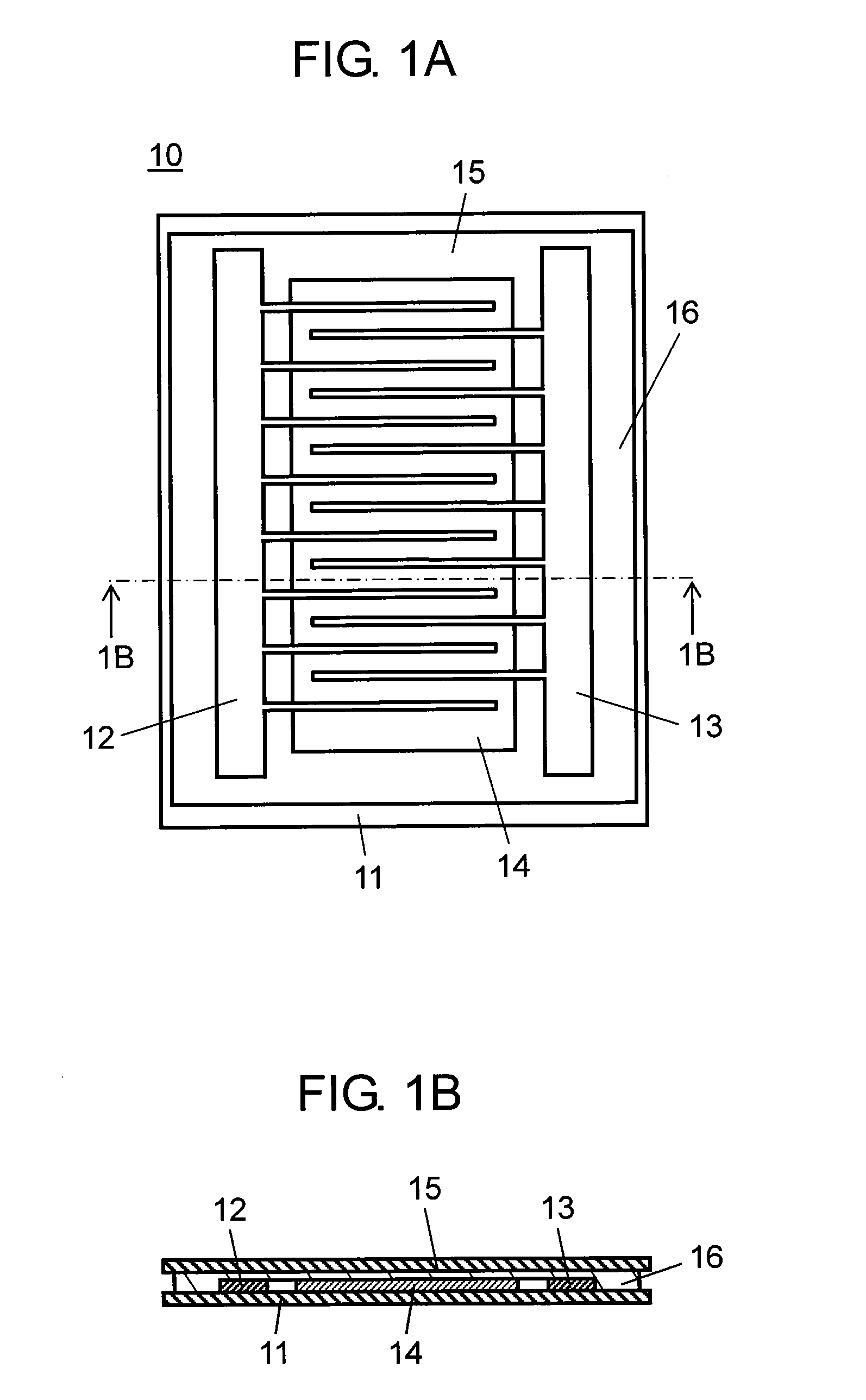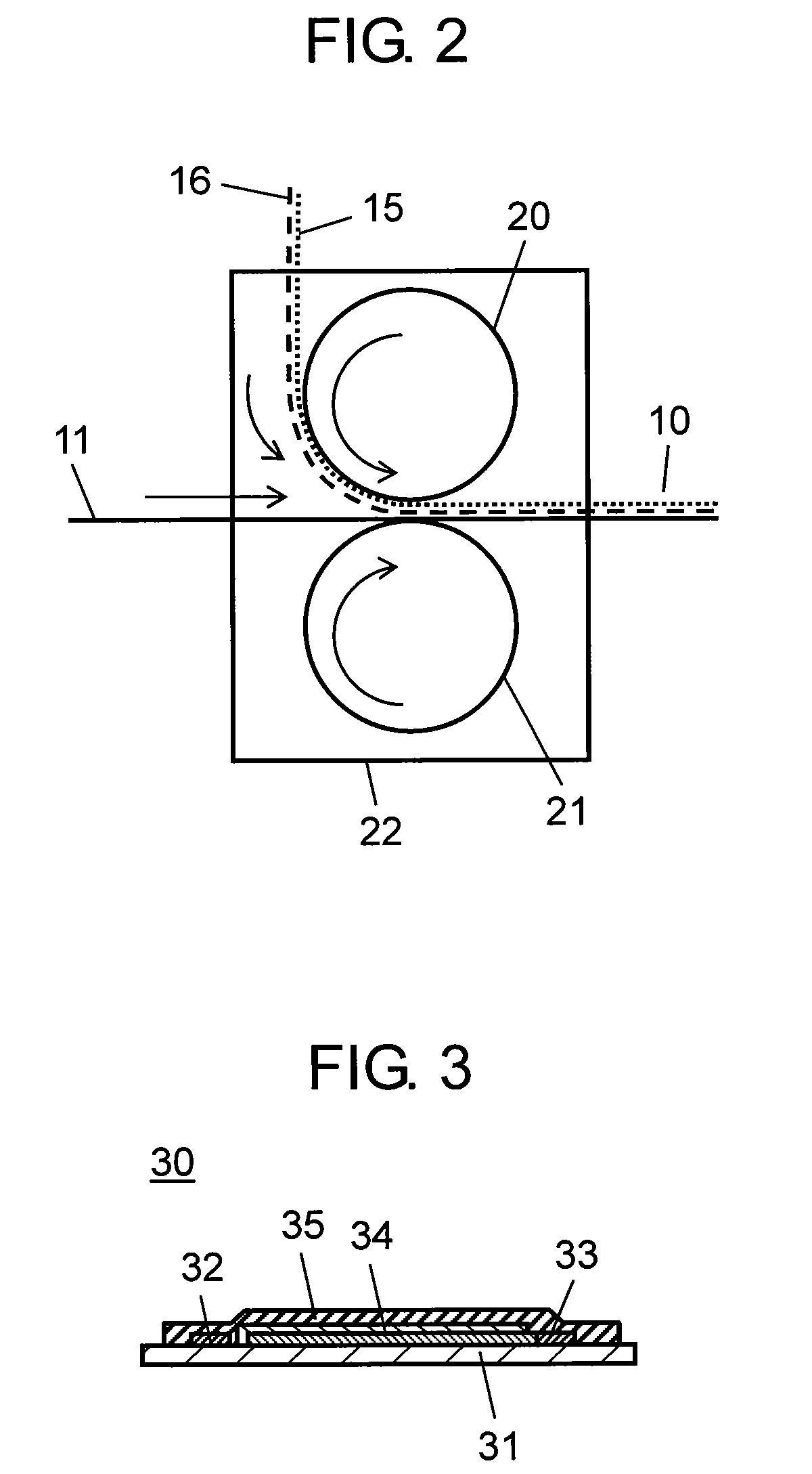PTC resistor
a resistor and characteristic technology, applied in resistors, ohmic resistance heating details, ohmic resistance heating, etc., can solve the problems of uneven heating, uneven heating, and compromise of passenger seating comfort, and achieve excellent flexibility, durability and reliability, and low manufacturing cost
- Summary
- Abstract
- Description
- Claims
- Application Information
AI Technical Summary
Benefits of technology
Problems solved by technology
Method used
Image
Examples
embodiment 1
of a Sheet Heating Element
[0140]Following is a description of an embodiment of a sheet heating element using the above-described polymer resistor. FIG. 10A is a plan view of Embodiment 1 of the sheet heat element of the present invention, and FIG. 10B is a sectional view of the sheet heating element of FIG. 10A along the line 10B-10B.
[0141]A sheet heating element 100 includes an insulating substrate 101, a first line electrode 61A, a second line electrode 61B, and the polymer resistor 60. The line electrodes 61A, 61B are sometimes referred together as line electrodes 61. The line electrodes 61A, 61B are disposed right-left symmetrically on the insulating substrate 101, and are partially sewn onto the insulating substrate 101 with a thread 102. Using a T-die extruder, for example, the polymer resistor 60 can be extruded as a film onto the insulating substrate 101 onto which the line electrodes 61 have been attached, and melt-adhered together with a laminator, so as to make electrical...
embodiment 2
of a Sheet Heating Element
[0164]FIG. 12A is a plan view of the sheet heating element 120 of Embodiment 2 of the present invention, and FIG. 12B is a sectional view along the line 12B-12B in FIG. 12A. The structure differs from that of Embodiment 1 (see FIG. 10A, 10B) in that line electrodes 121 are arranged in wavy lines on the insulating substrate 101.
[0165]As shown in FIG. 12A, the line electrodes 121 are arranged in wavy lines on the insulating substrate 101, being attached by a thread 102. In accordance with this structure, when an external force is applied to the sheet heating element 120, since the line electrodes 121 are arranged in wavy lines, having leeway in terms of length, they readily change the shape in response to tension, stretching, and bending. Therefore, the wave line electrodes 121 have mechanical strength with respect to external force superior to that of the line electrodes 61.
[0166]Furthermore, in regions where the wave line electrodes 121 run, the voltage app...
embodiment 3
of a Sheet Heating Element
[0167]FIG. 13A is a plan view of the sheet heating element 130 of Embodiment 3 of the present invention, and FIG. 13B is a sectional view along the line 13B-13B in FIG. 13A. The structure differs from that of Embodiment 1 (see FIGS. 10A, 10B) in that auxiliary line electrodes 131 are arranged between the pair of line electrodes 61. In other words, auxiliary line electrodes 131 are arranged between the pair of line electrodes 61, and are sewn onto the insulating substrate 101 by sewing machine, using a thread 132 made of polyester fibers or the like, as in the case of the line electrodes 61.
[0168]In the structure shown in FIG. 10A, the polymer resistor 60 is prone to be unevenly heated between the line electrodes 61, and the resistivity for that portion rises, concentrating the electric potential there. If this state continues, temperature of that part of the polymer resistor 60 increases more than other parts, resulting in what is known as the hot-line phen...
PUM
 Login to View More
Login to View More Abstract
Description
Claims
Application Information
 Login to View More
Login to View More - R&D
- Intellectual Property
- Life Sciences
- Materials
- Tech Scout
- Unparalleled Data Quality
- Higher Quality Content
- 60% Fewer Hallucinations
Browse by: Latest US Patents, China's latest patents, Technical Efficacy Thesaurus, Application Domain, Technology Topic, Popular Technical Reports.
© 2025 PatSnap. All rights reserved.Legal|Privacy policy|Modern Slavery Act Transparency Statement|Sitemap|About US| Contact US: help@patsnap.com



